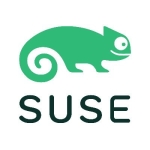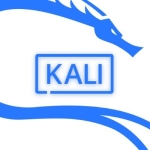What is our primary use case?
We use it for core infrastructure services, like package mirrors, configuration management hosts, and proxy requests going to the Internet or as reverse proxies in front of our applications. Our campus management software is delivered via RHEL and applications like Wikis learning platforms.
Almost all machines are running on virtualization. Only a few bare-metal systems exist today. Currently, we are not engaged in any kind of public or hybrid cloud environment.
What is most valuable?
One of the most important features is the package manager. It provides the ability to very easily roll back transactions when something has gone wrong. It is an easy-to-use tool that helps me in situations where something unexpected has happened. I found that this was one of the solution's major advantages over other distributions.
Another point that I really like is the ecosystem around RHEL. Red Hat provides security and bug-fix Erratas for every single update out there. Thus, I have a lot of pretty sophisticated information so I can inform myself about what an update is for, what could happen when I install it, or what would happen if I don't install it. The value added by the information Red Hat provides for its distribution is pretty good.
RHEL provides features that help speed deployment. We use Ansible in our environment, which is the free version that is usable with a RHEL subscription. It is pretty easy to set up a baseline configuration for each system as well as deploying our applications and configuring them.
Ansible and RHEL integrate pretty well. You see pretty quickly that Red Hat has a huge engagement in RHEL as well as in Ansible. They work very well together. This integrated approach decreases the time that we need to set up configuration jobs. It helps us to have faster deployments as well as make configuration changes faster and more secure. It is a tool for everyday use.
We use the solutions AppStream repository at some points. Compared to earlier versions of RHEL, we like that it is now easier to use the newer versions of run times, e.g., Python.
We use RHEL to run multiple versions of the same application or database on a specific operating system. For example, we run several versions of the MediaWiki platform on the same system. We usually have one version of a database management system per host. If we need another version, we deploy it on another host.
What needs improvement?
RHEL's feature for managing multiple versions of packages is getting better. In earlier versions, when I think about the Red Hat software collections, it was sometimes pretty hard to set them up and use them on a daily basis. With AppStreams, it got easier. What could still be improved is the lifecycle information about AppStream versions. Usually, when doing a major release, I have 10 years of support divided in different support phases, but a lot of applications from the AppStream repository have a completely different lifecycle so you need to check it separately. For example, a certain node.js version will be at the end of support in 10 months. I must make a note to update to a new version before it reaches the end of support. It would be awesome if the end of support date of the application streams would follow a stricter lifecycle with aligning end dates.
The Authselect tool needs improvement. This tool is used to connect your system to an identity provider or directory service, e.g., openLDAP. There is documentation and descriptions. While there are a few use cases and examples described, it is sometimes hard to use these tools to set up the configuration that we need for our specific environment. I would like it if there was more general information about the tool, not just describing a use case. For example, here is how to do it and how to connect to some kind of openLDAP service as well as more information about when you need to configure certificate services and mutual authentication. There is room for improvement, but it is more room for improvement in the documentation area than the RHEL system itself.
For how long have I used the solution?
We have been using RHEL since 2016.
What do I think about the stability of the solution?
The stability is awesome because we have had only a few issues in operations. Once it is set up, tested, and ready for production, it just runs. For the usual maintenance tasks, like updating the system and making configuration changes, there are almost no disruptions or issues in our environment.
The availability is great. We usually don't have big issues in our day-to-day operations.
What do I think about the scalability of the solution?
When it comes to increasing memory, CPU count, or deploying more RHEL instances, the scalability is good. We don't have any issues. However, I would guess it would be the same with another distribution.
How are customer service and support?
I would rate Red Hat's technical support for RHEL very differently. It depends on the area that you are looking for support. For example, when I have an issue with a RHEL core platform, there are a lot of good support engineers available to help with my issue. There have been phases where one could get the idea that they are short on staff with Ansible experience, but it is now getting better again. However, the average experience and response times are good. Their responses are also good. When you have a difficult case, they are able to escalate it quickly. Therefore, you get an engineer with the appropriate background to help solve your issue. I would rate the technical support as a solid eight out of 10.
How would you rate customer service and support?
Which solution did I use previously and why did I switch?
I was part of a working group who decided which major enterprise distributions we would introduce into our organization. Before 2016, we only used a very small number of Linux installations and different distributions. As an outcome of this working group, we decided to use RHEL and have used it since as the only distribution in our data center. We migrated from other distributions, such as SUSE Linux Enterprise or openSUSE, to RHEL.
While all distributions share a Linux kernel, there are differences in how to manage the distribution itself. A very important part is the package management. When you have to deal with tasks like updating packages, downgrading packages, and repairing damaged package databases, you want to have one package management tool that you know very well, not three different package managers where you only know the basics. To ease the management of multiple hosts, we decided to migrate to only one distribution. We hoped that we would have an advantage in consolidation.
How was the initial setup?
The complexity of the initial setup will depend on the requirements of your organization. Generally, I find it pretty straightforward. There is good documentation for it. The installer works great. I haven't had any issues.
What's my experience with pricing, setup cost, and licensing?
There are special academic offerings for academic institutes, which is pretty good. We need these offerings. In my personal opinion, the prices are okay. However, for educational purposes, they could be lower. For example, in Germany, the budget in the education sector for IT is lower compared to the huge universities in the US.
When you are only using the RHEL subscription system, it is okay. It can get complicated very quickly when you need multiple different subscriptions with a lot of SKUs.
When someone is going to look into RHEL, I suggest starting with an individual developer subscription, which everyone can get for free. With developer subscriptions, you won't be able to contact support, but you have almost all of the important applications and features of RHEL for free. You are not allowed to build your whole production on it, but you are able to develop applications, test configurations, test the platform, and try out almost everything.
Which other solutions did I evaluate?
In our IT environment, we were running Solaris and Microsoft Windows. It was decided that we wanted to move away from Solaris to some Linux distributions. In the process, we looked at distributions, like RHEL, Oracle Linux, Debian, SLES, and Ubuntu. We looked at all of these points:
- What are the management tools?
- How does it look in the ecosystem?
- How many packages are available and the distribution repositories?
We created huge metrics to score all these different points. There were over 200 points to score for the different distributions. In the end, RHEL was our winner.
Red Hat’s open-source approach was an important factor when choosing this solution. For example, let's say I won't use OpenStack from Red Hat anymore. There are other OpenStack distributors out there who know the application and can help us in the migration process. It is the same with the platform. At the core, the Linux distributions are pretty similar. We believe it would be easier to move to other solutions from other vendors compared to operating systems or software from proprietary vendors.
What other advice do I have?
We have plans to increase usage. Every new application that supports running on Solaris or Linux is going to be deployed on RHEL these days. I hope it will be our major operating system in the data center. So, in the foreseeable future, there would only be two operating systems: RHEL and Microsoft Windows.
I would rate this solution as nine out of 10.
Which deployment model are you using for this solution?
On-premises
Disclosure: PeerSpot contacted the reviewer to collect the review and to validate authenticity. The reviewer was referred by the vendor, but the review is not subject to editing or approval by the vendor.


















